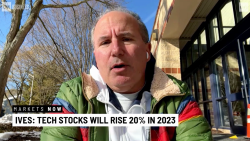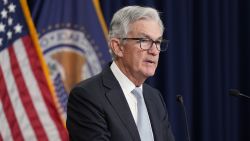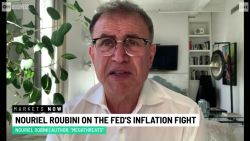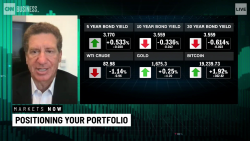Wall Street is struggling to find a replacement for Libor, the scandal-plagued interest rate that governs debt and contracts worth $200 trillion, including consumer mortgages and loans. Time is now running out.
Libor, which is short for the London Interbank Offered Rate, is supposed to disappear at the end of 2021. But Wall Street has been slow to transition to a new rate, with banks claiming that its heir apparent lacks many of the attributes that made Libor successful.
Libor is calculated daily, setting a rate at which banks can lend to each other. It is also the benchmark rate for trillions of US dollar-denominated contracts and loans, such as floating rate mortgages.
Starting during the global financial crisis, however, it became clear that the rate is also easy to manipulate and that various financial firms had rigged it to prop up returns and veil financial weakness. This brought on calls for reform, but replacing something so entrenched in the global financial system is no easy task.
The leading proposed replacement is SOFR, the Secured Overnight Financing Rate, which is published by the New York Federal Reserve and based on actual overnight transactions financial companies borrow cash using US Treasury securities — or government debt — as collateral.
One advantage of SOFR is that it is harder to manipulate, because it is based on real transactions, unlike Libor.
The Federal Reserve and global regulators have made clear that they want Libor to be a thing of the past. New York Fed President John Williams said in a speech last year only three things in life are certain: “death, taxes and the end of Libor.”
But many banks aren’t happy with SOFR as the chosen successor, claiming it is missing important attributes that made Libor so useful.
“The market is not particularly well prepared at this point in time,” said Mark Cabana, head of US rates strategy at Bank of America Merrill Lynch, even though “we’re in the sixth inning of the transition.”
With less than two years until Libor is expected to disappear, the financial world has to prepare to get on board with the new system.
The Financial Stability Oversight Council, chaired by Treasury Secretary Steven Mnuchin, said in its 2019 annual report that “widespread failure of market participants to adequately adapt” could lead to a liquidity crunch for various financial contracts and risk financial stability.
Shortcomings
SOFR has a number of shortcomings compared to good old Libor, market participants said.
The new rate is more volatile in ways that are not well understood by the market, which in turn breeds skepticism, said Cabana.
Overnight borrowing rates went through the roof last September, leading the New York Fed to pump billions of cash into the system to shore up liquidity.
Market participants also said SOFR isn’t credit-sensitive enough, meaning it is not as closely attuned to changes in credit market conditions because it is based on actual transactions rather than estimated future borrowing costs.
On top of that, banks complain that SOFR is missing a “term structure,” that is the ability for investors to look up what the rate will be in the future.
With Libor, the three-month rate shows what borrowing costs will be in 90 days, which is an important attribute for both banks and borrowers in planning out their cash flows. Borrowers — both institutional or laypersons — can look up exactly what their interest rate would be in the future under Libor. That’s not the case with SOFR, which doesn’t have the same kind of term structure, making it harder for future costs to be estimated.
The New York Fed will begin publishing 30-, 90- and 180-day SOFR averages on March 2, which are calculated differently than forward Libor rates.
“Having this guidance is great, but it’s not perfect yet,” said Leslie Falconio, senior fixed income strategist at UBS Global Wealth Management.
Change is hard
So far, adoption of SOFR has been slow, which is a concern given that the market is running out of time.
“Clients need to prepare for a world in which Libor goes away and SOFR is the only alternative. But they also need to keep an eye out for a different alternative,” said Cabana.
That thinking is partly why newly issued loans and contracts overwhelmingly still use Libor rather than jumping on the SOFR bandwagon.
But the headache is even bigger for outstanding Libor contracts.
Most of the $200 trillion of Libor contracts are derivatives, which are homogenous contracts governed by the same regulatory framework — the ISDA master agreement. If the agreement switches over to SOFR, it would cover the trillions of outstanding derivative contracts.
The $5 trillion loan market doesn’t have the same advantage, and a lot of loan documents might have to get rewritten.
For consumers with floating rate loans or mortgages this means they could get a letter in the mail in the near future, informing them that their borrowing rates will change.





















